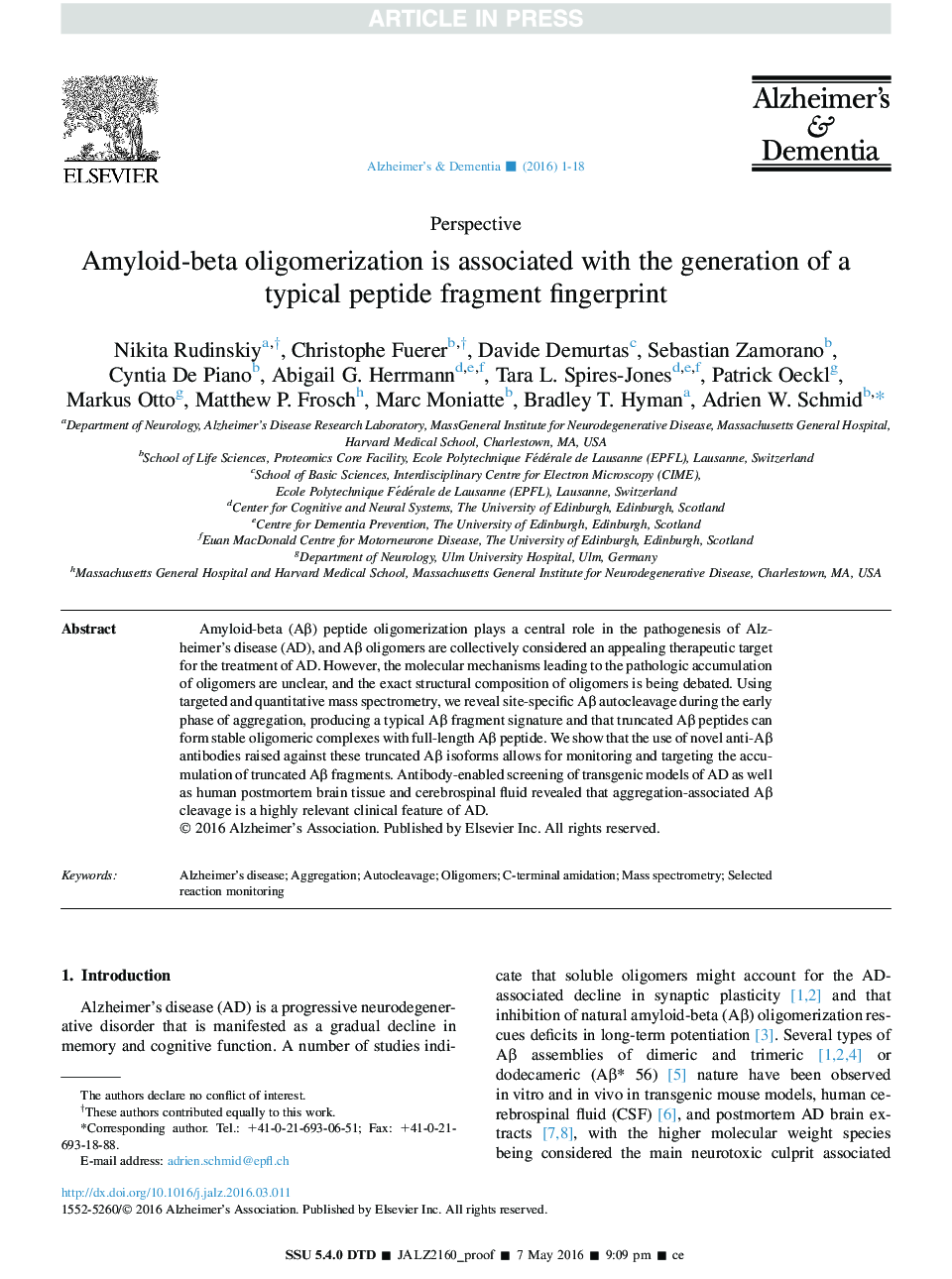| Article ID | Journal | Published Year | Pages | File Type |
|---|---|---|---|---|
| 5623894 | Alzheimer's & Dementia | 2016 | 18 Pages |
Abstract
Amyloid-beta (Aβ) peptide oligomerization plays a central role in the pathogenesis of Alzheimer's disease (AD), and Aβ oligomers are collectively considered an appealing therapeutic target for the treatment of AD. However, the molecular mechanisms leading to the pathologic accumulation of oligomers are unclear, and the exact structural composition of oligomers is being debated. Using targeted and quantitative mass spectrometry, we reveal site-specific Aβ autocleavage during the early phase of aggregation, producing a typical Aβ fragment signature and that truncated Aβ peptides can form stable oligomeric complexes with full-length Aβ peptide. We show that the use of novel anti-Aβ antibodies raised against these truncated Aβ isoforms allows for monitoring and targeting the accumulation of truncated Aβ fragments. Antibody-enabled screening of transgenic models of AD as well as human postmortem brain tissue and cerebrospinal fluid revealed that aggregation-associated Aβ cleavage is a highly relevant clinical feature of AD.
Keywords
Related Topics
Life Sciences
Neuroscience
Neurology
Authors
Nikita Rudinskiy, Christophe Fuerer, Davide Demurtas, Sebastian Zamorano, Cyntia De Piano, Abigail G. Herrmann, Tara L. Spires-Jones, Patrick Oeckl, Markus Otto, Matthew P. Frosch, Marc Moniatte, Bradley T. Hyman, Adrien W. Schmid,
